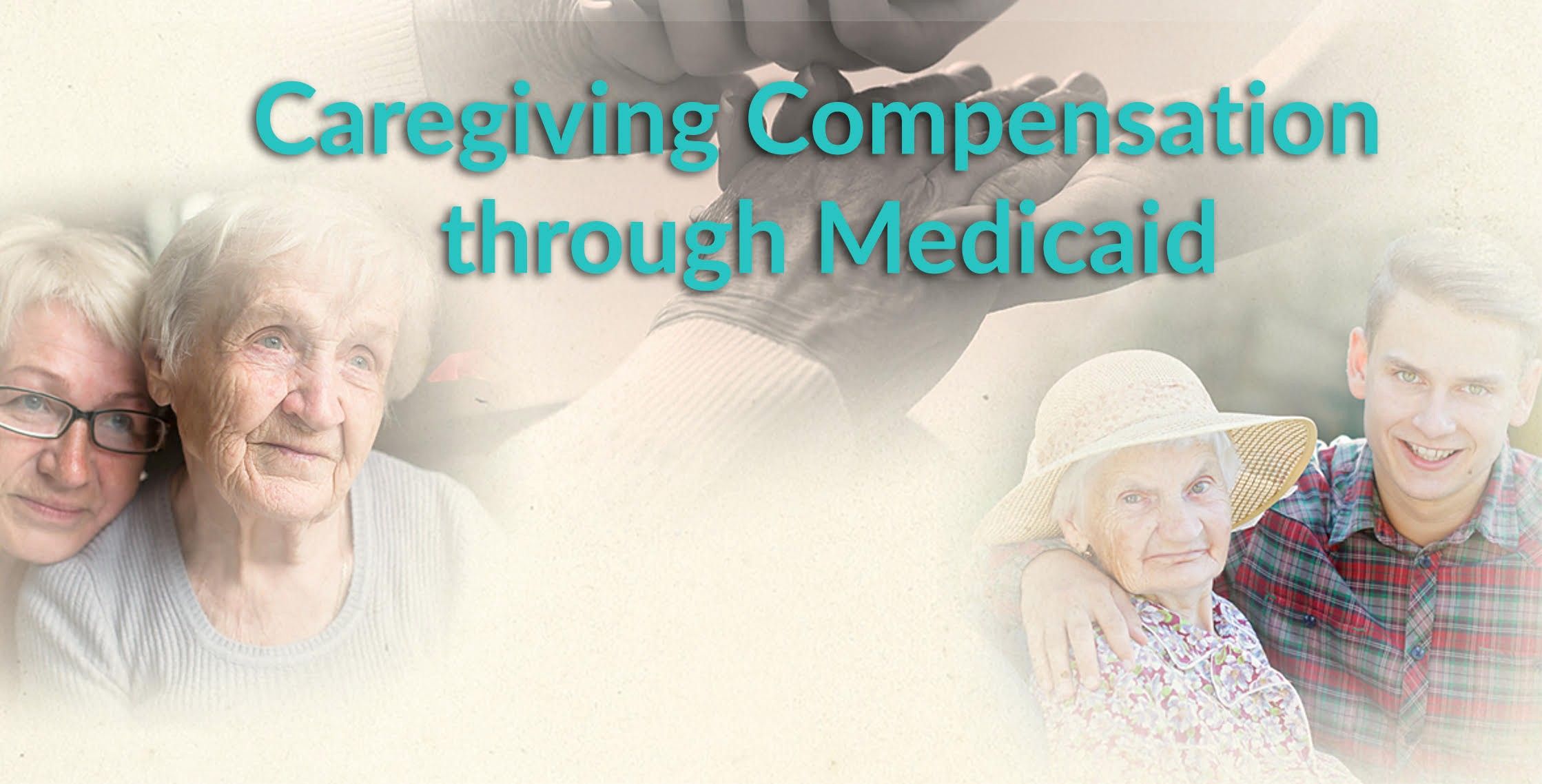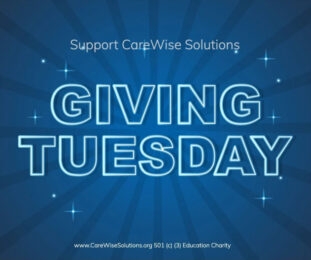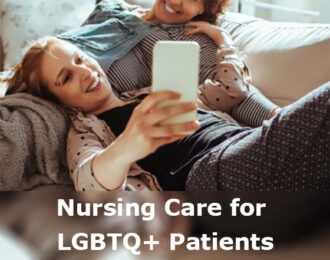How to Receive Financial Compensation by Caregiving for a Loved One

From the American Council on Aging
January 5th, 2021
Introduction
It is very common for family, especially spouses and adult children, as well as close friends to serve as informal (unpaid) caregivers for loved ones who are frail and elderly, disabled, or suffer from dementia, such as Alzheimer’s disease. In fact, according to the Family Caregiver Alliance (FCA), nearly 80% of adults who live at home and receive long-term care assistance depend solely on relatives and friends. Unfortunately, the role of informal caregiver isn’t an easy one to take on, particularly since many persons serving in this role still need to be employed in order to make ends meet. However, there is good news. If you are a caregiver of a loved one, you might be able to be paid by Medicaid to provide this service!
Each of the 50 states, as well as the District of Columbia, offer some type of consumer directed personal care assistance program via Medicaid. “Consumer directed” means the care recipient, to an extent, can choose his /her caregiver. Many of these states allow participants to hire friends and relatives to provide the needed assistance. Commonly, it is an adult child who is paid via Medicaid to provide care, but some states, such as Alabama, Arizona, California, Colorado, Delaware, Florida, Hawaii, Kentucky, Minnesota, Montana, New Hampshire, New Jersey, North Dakota, Oklahoma, Oregon, and Wisconsin, even provide funds for spouses to be paid caregivers! Generally, the amount of funds received are dependent on an assessment of the elderly individual’s needs, as well as the average wage for a home care aide in the state and geographic region in which one lives.
Please note that there are multiple types of Medicaid programs under which family members or friends can receive compensation. Caregivers may have to meet specific state requirements or become certified Medicaid providers in the state in which they reside in order to be paid by Medicaid. There are also eligibility requirements for the Medicaid recipient. Learn more below under “Medicaid Eligibility”.
Medicaid Programs through which Family Can Be Paid
Medicaid State Plans
Medicaid state plans, also called regular Medicaid, provide one option for becoming a paid caregiver for a loved one via Medicaid. While every state has a state Medicaid plan, it might be called by a different name depending on the state in which one resides. For instance, in California, Medicaid is called Medi-Cal, in Massachusetts, it is called MassHealth, in Missouri, it is MO HealthNet, and in Washington, it is called Apple Health. (To see other state specific alternative names for Medicaid, click here). Regardless of the name of the Medicaid program, all state Medicaid plans are entitlement programs. This means that anyone who meets the eligibility requirements is able to receive services via their state’s Medicaid program.
Through many of the state plans, personal care services are available, and many of the states allow program participants to self-direct their own care. (Self-direction may also be referred to as a cash and counseling program, consumer direction, or participant direction.) With self-direction, program participants are able to hire, train, manage, and even fire, the caregiver of their choosing. This means that relatives and friends who serve as informal caregivers can become paid caregivers through Medicaid’s state plan. Depending on the state in which one resides, one of the following options for self-direction of long-term care assistance may be available under a state’s Medicaid plan: Home and Community Based Services (HCBS) state plan option, Community First Choice, or the Self-directed Personal Assistance Services (PAS) State Plan Option.
Home and Community Based Services State Plan Option
Each of the 50 states, as well as the District of Columbia, offer some type of consumer directed personal care assistance program via Medicaid. “Consumer directed” means the care recipient, to an extent, can choose his /her caregiver. Many of these states allow participants to hire friends and relatives to provide the needed assistance. Commonly, it is an adult child who is paid via Medicaid to provide care, but some states, such as Alabama, Arizona, California, Colorado, Delaware, Florida, Hawaii, Kentucky, Minnesota, Montana, New Hampshire, New Jersey, North Dakota, Oklahoma, Oregon, and Wisconsin, even provide funds for spouses to be paid caregivers! Generally, the amount of funds received are dependent on an assessment of the elderly individual’s needs, as well as the average wage for a home care aide in the state and geographic region in which one lives.
Community First Choice (CFC)
Community First Choice, also called the 1915 (k) state plan option, allows program participants who require an institutional level of care (i.e., nursing home level of care) to receive personal attendant services via the state Medicaid plan. While there is an option for agency provided long-term care, there is also an option for self-direction, meaning friends and family can be hired to provide personal care services, such as assistance with Activities of Daily Living (ADLs) and Instrumental Activities of Daily Living (IADLs). Examples include assistance with bathing, grooming, dressing, mobility, light housecleaning, and transportation. At the time of this writing, the following nine states have implemented the CFC option: Alaska, California, Connecticut, Maryland, Montana, New York, Oregon, Texas, and Washington.
Self-Directed Personal Assistance Services (PAS) State Plan Option
The self-directed personal assistance services state plan option, also called the 1915 (j) authority, allows program participants to choose, train, and manage the personal care assistant of their choosing. Based on the budget they receive; program participants are able to choose the pay rate they would like to pay their caregivers.
With the 1915 (j) authority, program participants work together with fiscal intermediaries to handle the financial employment aspect of hiring caregivers, such as paying taxes. With the other self-directed options, program participants are not responsible for the financial aspects of having an employee.
This is not a program in and of itself, rather it is an option that states can utilize giving program participants an individualized budget based on personalized need. The 1915 (j) authority not only allows states to give cash to program participants that self-direct their own care via the state plan personal care program, but also under a home and community-based services waiver. To be clear, this option is only available under existing Medicaid programs. With the 1915 (j) option, states can limit the number of program participants who are able to self-direct their care, as well as limit consumer direction to parts of the state rather than the whole state. The state can also elect whether certain relatives can be hired as the caregiver, such as spouses and adult children.
Home and Community Based Services Waivers
Home and Community Based Services (HCBS) Medicaid waivers may also be referred to as 1915 (c) waivers or demonstration waivers. While not all states offer HCBS waivers, the majority of the states do. As with the names of state Medicaid programs, names of HCBS waivers are not consistent across states. For instance, Iowa has the HCBS Elderly Waiver, Indiana has the Aged and Disabled Medicaid Waiver, and the District of Columbia has the Elderly and Persons with Physical Disabilities Medicaid Waiver.
HCBS Medicaid waivers are not entitlement programs. This means there are caps on the number of program participants for any given Medicaid waiver and wait lists may exist. As mentioned previously, many of these waivers allow for participant-direction, meaning participants are able to hire the personal care assistant of their choosing, including friends and relatives. A variety of other services may also be available via HCBS waivers, including case management, homemaker services, adult day care, home health aides, personal emergency response systems, and respite care. Adult day care and respite care may prove especially helpful for caregivers of persons who need regular supervision, allowing caregivers a break from providing care.
Adult Foster Care
In some states, adult foster care, sometimes called adult family living or adult family care, is another option via Medicaid. While Medicaid does not cover the room and board for an adult foster home, it does provide financial assistance to cover the cost of care assistance. In simple terms, the elderly individual or person with dementia moves into the home of their caregiver where they receive supportive services such as assistance with daily living activities, including bathing, personal hygiene, dressing / undressing, eating, light housecleaning, preparing meals, 24-hour supervision, and transportation.
With this option, it is possible for informal caregivers to provide “foster care homes” for their loved ones. Please note that foster care homes are not an option to become a paid caregiver of one’s spouse. However, it is not uncommon for a parent to move in with their adult child who then provides a “foster home”. The following states allow family members to serve as foster care providers: Connecticut, Indiana, Louisiana, Massachusetts, Ohio, Rhode Island, and Texas. In the states that relatives are able to provide a “foster home”, the program could be available via a HCBS Medicaid waiver or the state’s regular Medicaid plan.
Caretaker Child Exception
While not specifically a Medicaid program, the caretaker child exception is a Medicaid exemption that allows an adult child to be “paid” for providing care assistance for an aging parent. Payment for care is not in the form of financial assistance via Medicaid, but rather this exemption allows the parent’s home to be transferred to the adult child as a form of payment. Simply stated, the adult child must have lived with his / her parent for at least two years immediately preceding nursing home placement. In addition, the adult child must have provided a level of care that delayed the parent’s need to relocate to a nursing home facility.
When considering this option, it is very important that the transfer is done correctly and all requirements are met. If not, it can violate Medicaid’s look back rule, resulting in a period of Medicaid ineligibility. Therefore, it is strongly advised that anyone considering this option seek counsel from a professional Medicaid planner. Find a Medicaid planner here.
Medicaid Eligibility
Eligibility for Medicaid for long-term care services, and hence Medicaid programs that pay for personal care assistants (caregivers), look at both an applicant’s financial (income and assets) situation, as well as his / her functional ability. Medicaid eligibility requirements are not consistent across states nor are the eligibility requirements for differing Medicaid programs within a state consistent. In most cases, the eligibility requirements for a HCBS Medicaid Waiver are less restrictive than are the requirements for a state Medicaid plan. As a general rule of thumb, as of 2021, senior applicants are limited to $2,382 / month in income and $2,000 in assets. Some states and programs require applicants need a nursing home level of care, while others require that applicants need assistance with their activities of daily living. (ADLs include bathing, dressing, eating, toileting, transferring, and maintaining continence).
To learn more about Medicaid eligibility, click here. State specific eligibility can be found here.
How to Apply / Getting Started
Regardless of the Medicaid program through which a family member, spouse, or friend hopes to be compensated for caregiving, the first step is enrolling the individual who requires care in his / her state’s Medicaid program. Prior to beginning the enrollment process, it is important to ensure the individual meets his /her state’s eligibility requirements.
Because the financial criteria (income and assets) for Medicaid are so restrictive, many candidates will not be automatically eligible for the Medicaid program. However, this does not mean they cannot become Medicaid-eligible. Many individuals choose to work with a professional Medicaid planner to ensure their eligibility. Medicaid planners, in addition to helping with the paperwork, are familiar with the nuances of eligibility and can help families restructure their finances accordingly.
If a family has determined their loved one is automatically eligible, the next step is to contact their state’s Medicaid office to begin the application process.
If a family has determined their loved one is not automatically eligible, they may wish to contact a Medicaid planner.
Once accepted and enrolled in Medicaid, the next step is to determine and apply for the specific Medicaid program through which they can receive compensation. The beneficiary’s primary Medicaid contact should be able to direct them to the appropriate program in their state.





